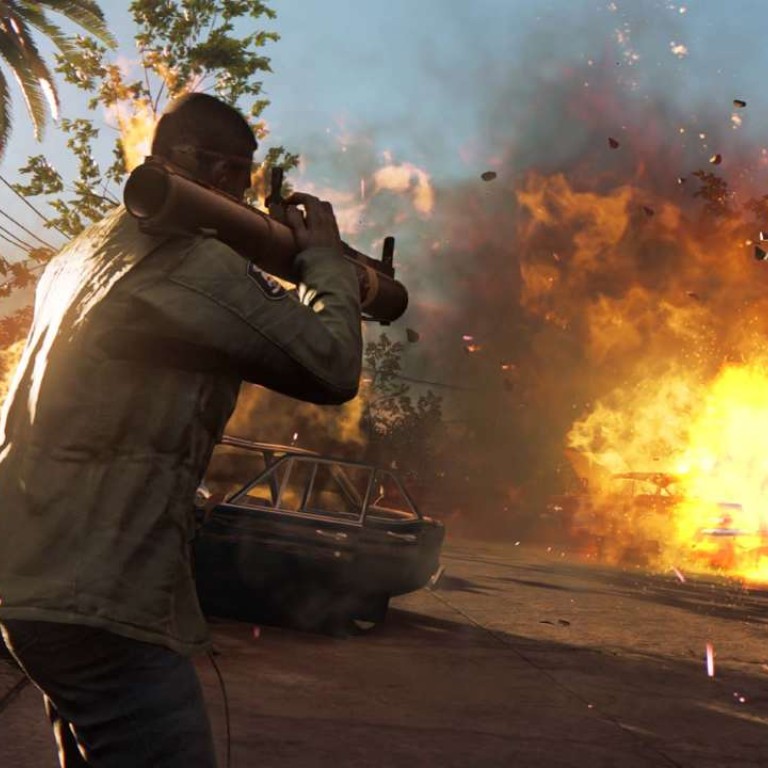
Game review: Mafia III – how can a super-stylish 1960s-set shooter be this boring?
The writing is smart and the characterisation superb, but fatally repetitive gameplay makes Mafia III an offer you can easily refuse
Mafia III
2K Games
2.5/5 stars
America in the 1960s: a presidential assassination, landmark civil rights movements, a nuclear arms race, the birth of modern music, men landing on the moon, the beginning of Star Trek, and a controversial war abroad. This is a remarkable era – one barely seen in video games – and Mafia III makes good use of it as cultural backdrop.
It tells its story well, with smart writing and some superb characterisation that elevate its simple revenge plot. Ultimately, however, it never capitalises on its open world potential, instead succumbing to an almost constant lull of tediously unimaginative repetition that makes for a boring and dated shooter.
Mafia III (for PC and PlayStation 4) starts relatively strongly. Developer Hangar 13 successfully captures the distorted soul of the 1960s and places us in the rugged boots of Lincoln Clay – a biracial orphan and Vietnam veteran recently returned home to the Big Easy inspired city of New Bordeaux. He’s the archetypal Henry Hill protagonist; a likeable, loyal young guy who you root for despite his penchant for murder, torture and other reprehensible hobbies.
Game review – BioShock: The Collection presents the trilogy in remastered glory
His closest colleagues are similarly personable despite their illegal activities. Sammy, leader of the Black Mob, raised Lincoln as one of his own, while Father James Ballard is Lincoln’s go-to for advice and help whenever he’s in need of moral guidance.
These well-paced first hours cement the game’s unflinching depiction of the racism and violence that dominated so much of 20th-century America. An excellent script, great voice acting and convincing facial animations bring the game’s lavish cut scenes to life, and the faux documentary cuttings create the sense that the game’s events are historical accounts rather than fictional escapades. But a strong introduction makes way for hours of cookie-cutter objectives that fail to sustain the pace, adrenaline or imagination.

The core gameplay is solid – guns are punchy, head shots bloody and there’s satisfaction in capping goons with Tommy guns and pump-action shotguns – but the simplicity of your core tasks just doesn’t progress anywhere. Stealth is also a basic but entirely functional option for play, and while the AI is frequently cartoonish dumb it at least allows you to sneak around cutting throats and stabbing necks without much interruption or frustration.
Robbing rackets, murdering targets and destroying shipments of contraband; complete enough of these dull tasks and you’ll eventually have to kill the leader of each district, overtaking the rackets for yourself and assigning them to one of your underbosses.
Game review: Uncharted: Fortune Hunter offers action-filled missions for free
A couple of great set-piece moments are a welcome break from the monotony, but they’re fleeting glimpses of promise within a 30-hour game. A shoot-out in an abandoned fairground, a scrapyard sniper battle, and a great car chase with your associate Vito: these kind of standout missions appear every couple of hours, but are locked behind a tonne of boring objectives that you have to do in order to get through to the next interesting chunk of story exposition.
Progressing through the game and assigning districts to your underbosses unlocks new abilities. Call up an arms dealer and he’ll turn up in a whacky Mystery Machine so you can buy guns, restock ammo and buy new abilities before assaulting an enemy hideout. Call an Irish hit squad for assistance during a raid, or call your consigliere to pick up your precious money and stash it in your safe so you don’t lose it when you die. They’re cool little features, but they’re not enough to redeem the terminal gameplay loop. At times, Mafia III is 2007-era Ubisoft, with all of the promise, potential and repetitive disappointment of the first Assassin’s Creed.
Video game review: Assassin’s Creed: Unity, by Ubisoft
Even the city of New Bordeaux – with its fantastic period details, great soundtrack and some gorgeous, rainy nighttime views – can’t offset the fact that Mafia III’s central activities don’t change throughout its lengthy runtime. The aesthetic highs are also contrasted with a surprising level of technical disappointments. Flat textures, weird daytime lighting, muddy sky boxes and some ugly “pop-in” moments make for a really jarring mix of good and bad throughout, while visual glitches are an issue on both PS4 and PC.
To say Mafia III is a disappointment is an understatement. It has all of the surface components to form a great game: the writing and acting are superb, its direction and style are great, but its mechanical underpinnings are archaic and desperately unimaginative. It’s ironic that Mafia III’s predecessor had a similarly stylish open world, but wasted it by giving players nothing to do besides its main story missions. Mafia III has the opposite problem – tonnes that you have to do, but you just don’t want to do any of it.

